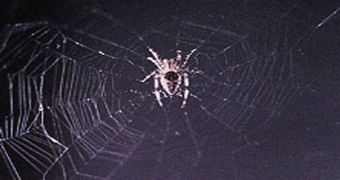A box currently on its way back to Earth aboard the Discovery space shuttle may still contain a live spider, of the two that have been originally placed inside the container, along with fruit flies as their food. The astronauts on the ISS have checked the status of the arachnids from time to time, but the thickness and darkness of the enclosure, along with the fact that there have been many fruit flies carcasses inside, has prevented them from seeing any type of action.
However, at one point, a camera has recorded movement inside, and the science team has concluded that at least one of the two spiders is still alive. Elmo and Spiderman were placed inside the box along with many flies, which multiplied over the months, supplying the arachnids with sufficient food. Another thing that makes experts believe that at least one of them may be alive is the fact that spiders have the ability to slow down their metabolisms when things get rough, an action that exponentially increases their chances of survival.
In addition, researchers are happy that the flies themselves, originally meant for nothing more than food for Elmo and Spiderman, have actually multiplied inside the enclosure. “There might be a possibility that there may be a live fruit fly alive in there and they'll be looking for that,” Julie Robinson, station program scientist at NASA, told Space on Thursday. She said that the spider experiment inadvertently turned into a multi-generation fruit fly experiment as well.
“The spider habitat was very hard to see inside because there were quite a bit of fruit fly carcasses, as you might expect from a hungry spider. Spiderman and Elmo are on their way home,” Mission Control Michael Fincke, the commander of the current ISS crew, told, as he packed the spiders and some butterfly larvae for their ride home on Wednesday.
Unfortunately, out of the two larvae that have been originally sent to the ISS, only one has managed to turn into a chrysalis, but none has morphed completely into a butterfly. “That's not necessarily surprising because developmental biology is affected by microgravity,” Robinson continued, adding that growing butterflies was difficult even on Earth, and that the science team would not know what went wrong until it analyzed the biological samples that would land at the Kennedy Space Center on Saturday.

 14 DAY TRIAL //
14 DAY TRIAL //